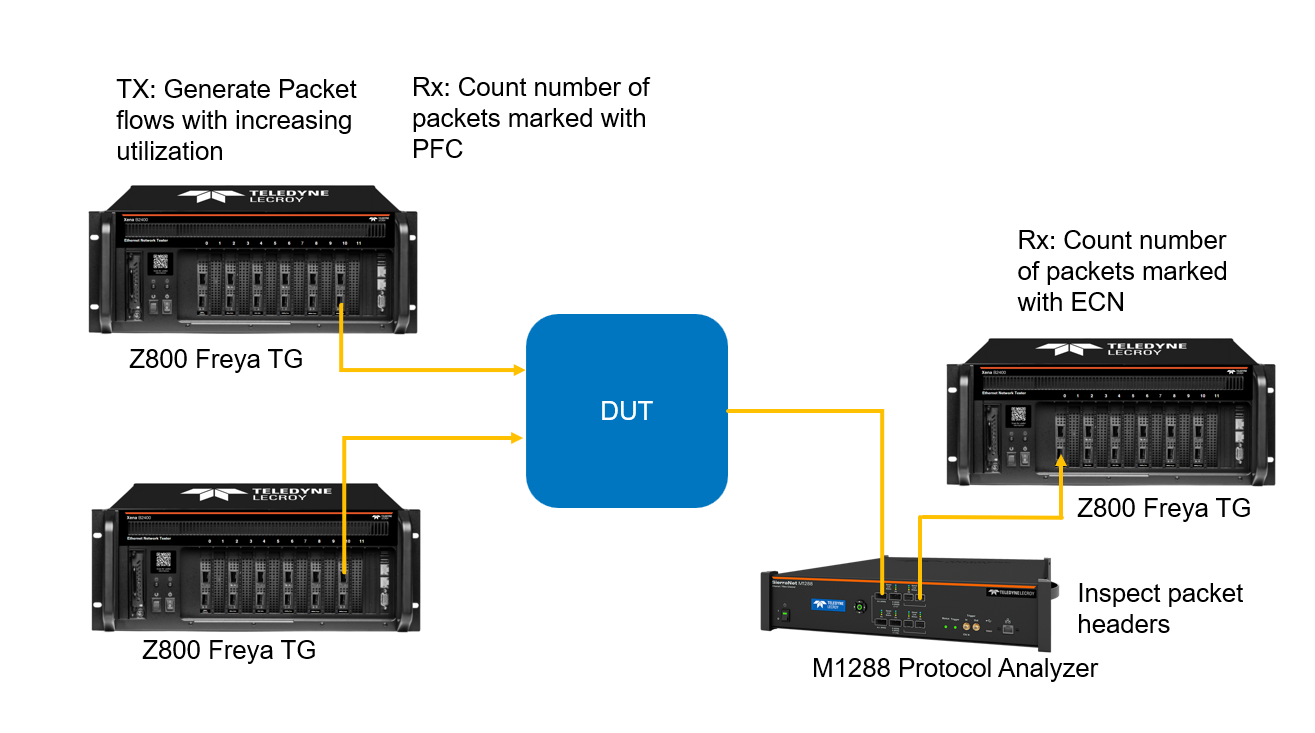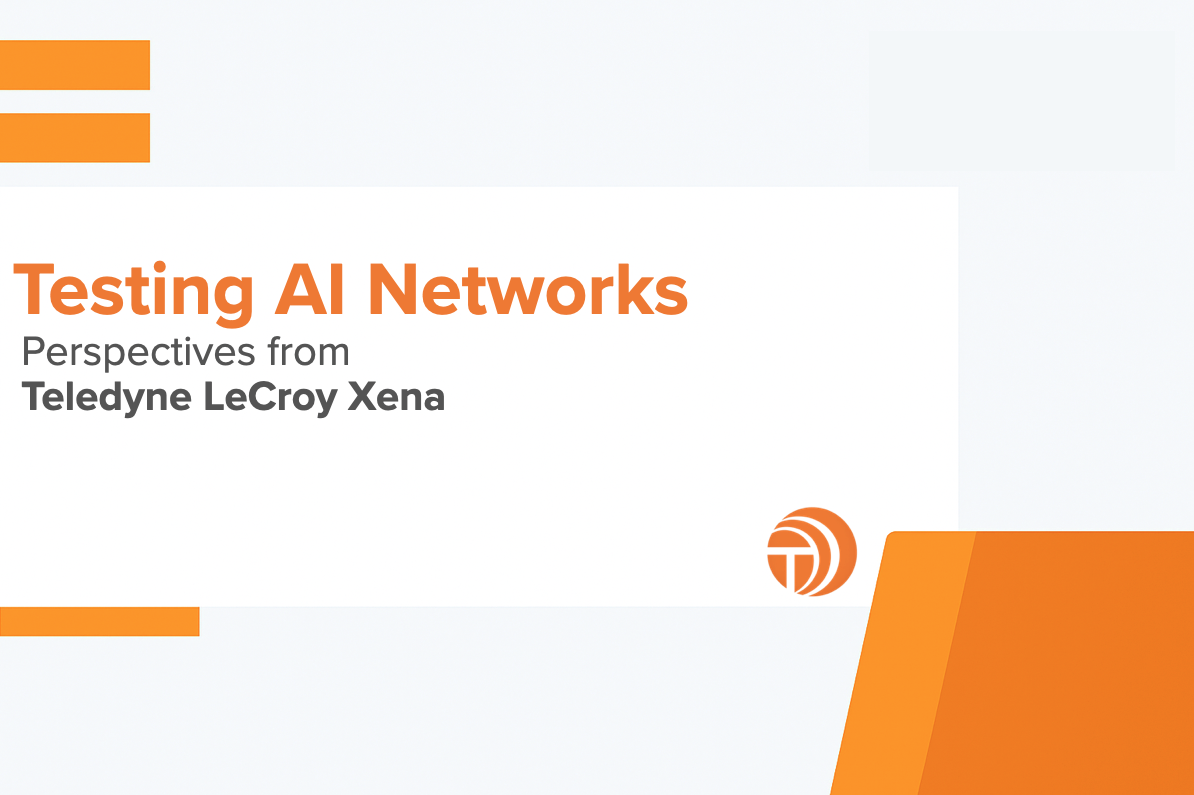As AI model complexity grows, so does the burden on the data-center network fabrics beneath it. Intensive RoCE flows, congestion mechanisms that must react in microseconds, and strict job-completion deadlines make robust network testing as critical as the hardware itself. Validating performance by deploying multitudes of GPUs is financially impractical; instead, specialized instrumentation emulates these scenarios economically and effectively.
The Tolly Group discussed these issues with Martin Qvist Olsen, VP of Marketing and Product Management, and Christopher Arlaud, Creative Communications at Teledyne LeCroy Xena, gaining deeper understanding of modern AI networking challenges.
Why AI Fabrics Require Specialized Testing
As Olsen explains, "AI performance verification faces unique challenges, especially when differentiating between general traffic and specialized RoCE traffic for quality of service optimization. The ability to create realistic traffic loads is super critical for performance verification."
Generating Ethernet and RoCE traffic at wire speed is crucial for validating AI fabrics. RoCE (RDMA over Converged Ethernet) wraps Remote Direct Memory Access data in Ethernet frames, allowing GPUs to exchange tensor data directly for minimal latency. However, this efficiency makes RoCE flows hypersensitive to jitter, congestion, and packet loss.
In AI clusters, common RoCE‑v2 patterns are collective‑all‑reduce bursts and parameter synchronization across thousands of network interfaces at once. A single dropped or out‑of‑order packet can force expensive retries and inflate job‑completion time (JCT). Effective testing therefore needs to capture the behavior of RoCE queue-pairs and flow-control feedback; relying solely on stateless packet blasts risks overlooking the very conditions that slow large-scale training jobs.
Equally important are validating congestion-management mechanisms such as Ethernet Congestion Notification (ECN) and Priority Flow Control (PFC). Properly tuned ECN thresholds (Kmin/Kmax) and responsive PFC pause frames prevent buffer overflow and packet delays.
Stress‑Testing RoCE & ECN in the Real World
Modern AI workloads create distinct traffic patterns that demand specialized testing approaches. As Olsen notes, "AI often has three different phases, and you need to tune your network differently based on what phase you're in – whether in the data preparation collection phase, the AI training mode with east-west traffic between GPUs, or the inference phase with more north-south traffic from the internet.”
Unlike traditional network testing with uniform traffic loads, AI networks must accommodate three distinct operational phases with unique challenges. The GPU training phase, relying heavily on RoCE-v2 protocols, proves especially vulnerable to network imperfections. A single dropped or misordered packet can trigger expensive retransmission cycles, dramatically extending job completion times.
High volume traffic tests are only the starting point. True AI fabric validation means staging targeted hiccups that look and feel like production, such as short lived queue stalls inside SmartNICs, bursty micro loss, and the occasional packet arriving out of order. When engineers pair these stress shots with granular switch and NIC telemetry, they can fine tune queue depths, firmware timers, and, where it matters, the ECN and PFC thresholds that keep training jobs on track.
Xena’s Comprehensive Solutions for AI Testing
Xena meets these challenging AI network testing demands with specialized, robust solutions:
Traffic Generation: Tools accurately replicate diverse AI workloads from 10 Mbps to 800 Gbps speeds, with a forthcoming 1.6 Terabit generator extending capabilities further.
Network Impairment and Jamming: Solutions intentionally introduce packet loss, jitter, latency, and reordering to test network resilience and identify optimization opportunities under real-world conditions.
Protocol Analyzers: Provide detailed insights into complex network interactions at speeds up to 800 Gbps, helping rapidly identify and address bottlenecks or configuration issues.
The Business Case: Maximizing Return on Investment
Proper AI network testing extends far beyond initial tool investment. Olsen highlighted that thorough testing directly translates to enhanced reliability, improved performance, and greater client satisfaction.
The ROI can be dramatic. As Olsen explains, "It could mean whether you win or lose a client. With 800 gig switch ports being super expensive, if you want to compensate with just having a bigger network to move traffic, you're talking about huge investments in cables, optics, and equipment." Poor performance can be masked by purchasing additional equipment, but this carries enormous costs without necessarily improving performance.
Conversely, well-optimized AI networks provide competitive advantages, delivering lower job completion times and potentially paying back testing investments many times over. Testing tools represent a fraction of full AI data center deployment costs.
Xena’s Roadmap: Preparing for 1.6T and Ultra-Ethernet
To meet future industry demands, Xena will soon introduce its innovative 1.6 Terabit traffic generator, featuring the latest 224G SerDes technology. The company's active participation with industry groups such as the Ethernet Alliance and Ultra Ethernet Consortium ensures alignment with evolving standards and supports future AI networking requirements.
Implications for Network Architects and Operators
Network architects must reassess testing strategies for AI-driven complexities. Traditional methods alone are insufficient; specialized approaches are crucial for capturing AI traffic nuances across three phases requiring different optimization strategies.
Organizations often underestimate possible performance improvements by treating AI traffic differently from traditional Ethernet traffic. Prioritizing accurate traffic replication, comprehensive congestion control validation, and realistic impairment testing prevents costly performance issues.
Key Takeaways
Traditional testing methods inadequately address AI-specific network requirements and the unique sensitivities of RoCE protocols
Xena's comprehensive testing solutions realistically emulate complex AI traffic patterns, including specialized impairment scenarios that mirror real-world conditions
Proper RoCE and congestion management validation prevents critical performance degradation and expensive retransmission cycles
The ROI from optimized AI network performance far exceeds the cost of comprehensive testing tools
Continuous innovation and proactive standards engagement position Xena to support evolving AI network needs as speeds increase to 1.6T and beyond
Learn More
Visit Xena’s dedicated AI solutions page for comprehensive resources, technical white papers, and detailed product information: https://xenanetworks.com/solutions/ai-infrastructure/

